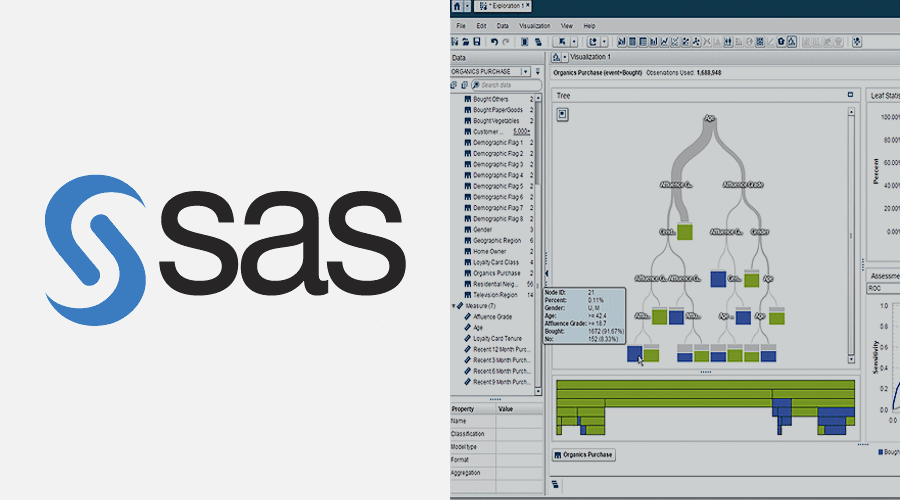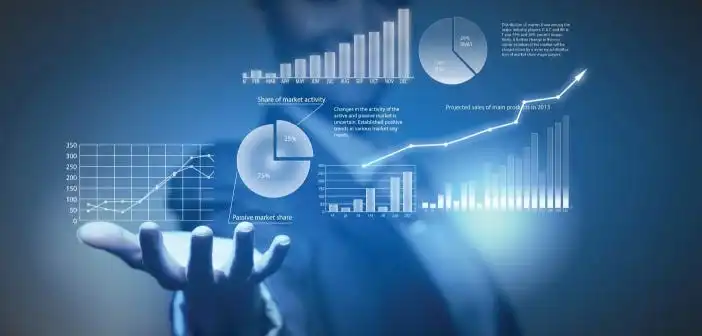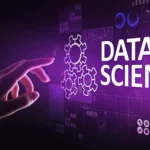Bivariate analysis is a fundamental technique in data science. It involves analyzing the relationship between two variables. Through bivariate analysis, data scientists can uncover patterns, correlations, and associations between variables, providing valuable insights into various fields, including biology, healthcare, genomics, the environment, and clinical research.
In this article we will explore concept behind the bivariate analysis, why is it important in data science, software and programming languages to perform bivariate analysis, and examples explained from data science in biology.
What is Bivariate Regression Analysis?
Bivariate regression analysis is a specific type of regression analysis that involves the examination of the relationship between two variables: one independent variable and one dependent variable. It seeks to determine how changes in the independent variable are associated with changes in the dependent variable. Bivariate regression analysis is particularly useful for understanding simple cause-and-effect relationships between two variables.
Also learn about 5 Top Statistical Programming Languages and Software for Biological Data Science.
What is the Theory of Bivariate Analysis?
In bivariate regression analysis, the relationship between the independent variable X and the dependent variable Y is modeled using a straight line equation:
In simple terms, it seeks to find the best-fitting line that describes the relationship between the two variables. This line is represented by an equation, typically in the form of
y = mx + b
where y is the dependent variable, x is the independent variable, m is the slope, and b is the intercept.
When interpreting the results of bivariate analysis, the type of line or pattern observed provides insights into the relationship between the two variables:
- A straight line suggests a linear relationship, where changes in one variable are associated with proportional changes in the other variable.
- A positive slope indicates a positive relationship, where increases in one variable correspond to increases in the other variable.
- A negative slope indicates a negative relationship, where increases in one variable correspond to decreases in the other variable.
- A horizontal line suggests no change in the dependent variable as the independent variable changes.
- Clustered points or no apparent pattern suggest little to no relationship between the variables.

What is Application of Bivariate Analysis in Data Science?
Bivariate analysis is crucial in data science for several reasons:
- Identifying Relationships: By examining the relationship between two variables, data scientists can identify patterns and correlations, enabling them to make informed decisions.
- Predictive Modeling: Bivariate regression analysis forms the basis for predictive modeling, where the relationship between variables is used to predict future outcomes.
- Variable Selection: Understanding the relationship between variables helps in selecting the most relevant features for building predictive models, leading to more accurate results.
- Hypothesis Testing: Bivariate analysis allows researchers to test hypotheses and determine the significance of relationships between variables.
Also explore 8 Data Science Portfolio Projects in Healthcare and Genomics: Step by Step Guidance and Resources.
How Bivariate Analysis is done?
For bivariate regression analysis, several software, tools, and programming languages are available to researchers and analysts. These tools are specifically designed to handle multivariate regression models, including bivariate analysis. Here are some of the commonly used ones:
R: R provides various packages such as lm for linear models and glm for generalized linear models, which can handle bivariate regression analysis along with more complex multivariate regression models.
Python: Python offers libraries like statsmodels and scikit-learn, which provide functionalities for conducting multivariate regression analysis, including bivariate analysis.
Know more about Python for Bioinformatics: 11 Packages and Cheat Sheets for Biological Data.
MATLAB: MATLAB’s Statistics and Machine Learning Toolbox includes functions for fitting multivariate regression models, allowing users to perform bivariate regression analysis.
SPSS: IBM SPSS Statistics software offers capabilities for conducting multivariate regression analysis, allowing users to perform bivariate analysis along with other types of multivariate analyses.
SAS: SAS provides procedures like PROC REG and PROC GLM for fitting multivariate regression models, enabling users to conduct bivariate analysis as well.

STATA: STATA software offers commands such as regress for fitting multivariate regression models, making it suitable for conducting bivariate regression analysis and other multivariate analyses.
JMP: JMP statistical software provides tools for fitting multivariate regression models, allowing users to perform bivariate regression analysis and explore relationships between two variables.
SPSS Modeler: SPSS Modeler offers a graphical interface for building and deploying predictive models, including multivariate regression models, making it suitable for bivariate analysis tasks.
Minitab: Minitab statistical software includes features for fitting multivariate regression models and conducting bivariate regression analysis, providing tools for data analysis and interpretation.
Excel: While Excel is not specifically designed for advanced statistical analysis, it does offer functionalities for fitting regression models, including bivariate analysis, through the use of add-ins or custom functions.
These software, tools, and programming languages provide researchers and analysts with the capabilities to conduct bivariate regression analysis efficiently and effectively, enabling them to explore relationships between two variables and derive insights from their data.
Examples of Bivariate Analysis in Biological Data Science
Bio-Data Science:
Example: Studying the relationship between age and blood pressure in a population of individuals.
Method:
- Data Collection: Gather data on the age and blood pressure of individuals.
- Data Visualization: Create scatter plots to visualize the relationship between age and blood pressure.
- Bivariate Regression: Use statistical software like R to perform linear regression analysis to quantify the relationship between age and blood pressure.
- Interpretation: Analyze the regression coefficients to understand how age influences blood pressure.
Healthcare Data Science:
Example: Investigating the association between smoking status and lung cancer risk.
Method:
- Data Collection: Collect data on smoking status (smoker/non-smoker) and the incidence of lung cancer in a population.
- Data Analysis: Conduct chi-square tests or logistic regression to assess the relationship between smoking status and lung cancer risk.
- Interpretation: Examine odds ratios or p-values to determine the strength and significance of the association.
Genomic Data Science:
Example: Exploring the correlation between gene expression levels and disease susceptibility.
Method:
- Data Collection: Obtain data on gene expression levels and disease status from genomic databases.
- Data Processing: Preprocess the data to remove noise and normalize gene expression values.
- Correlation Analysis: Use Pearson correlation or Spearman rank correlation to quantify the relationship between gene expression and disease susceptibility.
- Visualization: Create heatmaps or scatter plots to visualize the correlation patterns.

Environmental Data Science:
Example: Assessing the relationship between pollution levels and respiratory diseases in urban areas.
Method:
- Data Collection: Gather data on pollution levels (e.g., PM2.5 concentrations) and respiratory disease cases in different urban areas.
- Data Analysis: Perform regression analysis to examine the impact of pollution levels on respiratory disease incidence.
- Spatial Analysis: Use geographic information systems (GIS) to map pollution hotspots and disease clusters.
- Policy Implications: Provide insights for policymakers to implement measures for reducing pollution and protecting public health.
Clinical Data Science:
Example: Investigating the relationship between drug dosage and treatment outcomes in patients with a specific medical condition.
Method:
- Data Collection: Collect data on drug dosage, patient characteristics, and treatment outcomes from clinical trials or electronic health records.
- Data Analysis: Conduct bivariate analysis to determine the relationship between drug dosage and treatment response.
- Stratified Analysis: Perform subgroup analysis to assess whether the relationship varies based on patient demographics or disease severity.
- Clinical Decision Making: Use the findings to optimize drug dosing strategies and improve treatment outcomes for patients.
Pharmaceutical Data Science:
Example: Examining the association between drug dosage and therapeutic response in patients with a specific medical condition.
Method:
- Data Collection: Collect data on drug dosage (independent variable) and treatment outcomes (dependent variable) from clinical trials or electronic health records.
- Regression Analysis: Perform linear regression to evaluate how changes in drug dosage affect treatment response.
- Dose Optimization: Use bivariate analysis to determine the optimal drug dosage for maximizing therapeutic efficacy while minimizing adverse effects.
Conclusion
Bivariate analysis is a versatile tool that plays a vital role in data science across various domains. By examining the relationship between two variables, researchers can gain valuable insights into complex phenomena and make data-driven decisions.
Whether it’s understanding the impact of environmental factors on health or uncovering genetic associations with diseases, bivariate analysis serves as a cornerstone in unlocking the mysteries hidden within vast datasets. Through careful analysis and interpretation, data scientists can harness the power of bivariate analysis to drive innovation and advance knowledge in their respective fields.
Learn more about Bioinformatics vs Biostatistics: A 2024 Analysis of Biological Data Trends.



